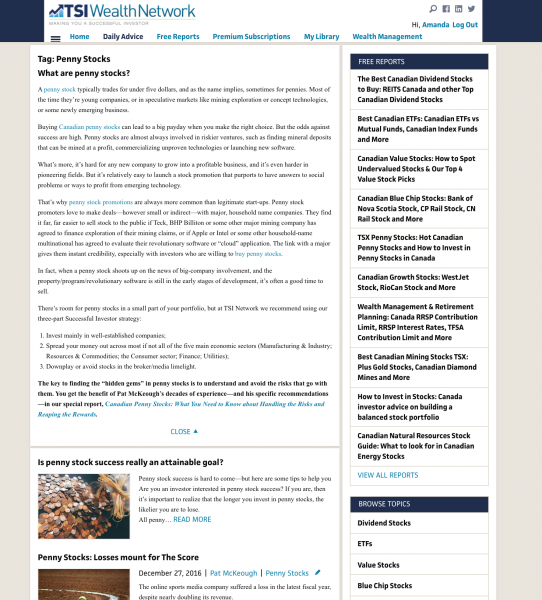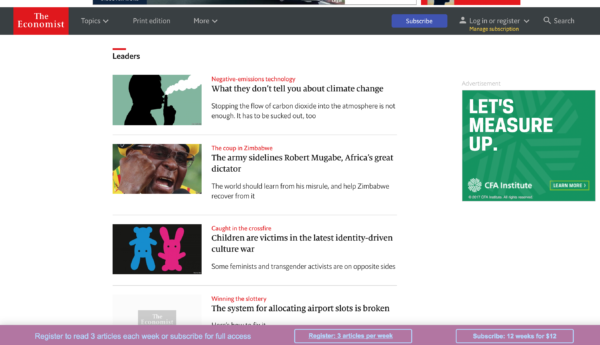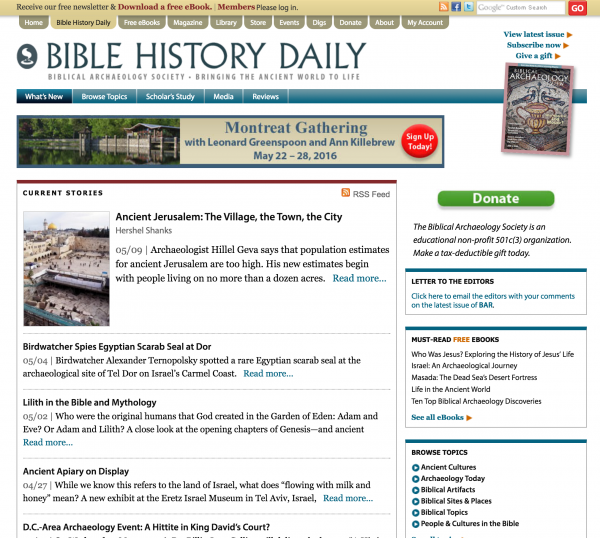
Organic search isn’t just for advertising-based publishers – subscription websites, have your cake and serve your paywall, too

Magazine publishers have been giving away their content for decades in an effort to attract new subscribers. In online publishing, ad-driven subscription websites have an additional incentive: Increasing the eyeballs that see their sponsors’ ads.
Publications like Mother Earth News put all their magazine content on their subscription website. They believe it hasn’t hurt their circulation, and at the same time, says General Manager Bill Uhler, it helps them cast a wider SEO net.
[text_ad]
In turn, SEO got them to a domain authority of 79, and that has advertisers literally lining up to wait for spots to become available.
But what if your business model is subscription-based? You need to drive traffic, but you can’t afford to give away content on your subscription website, either, and without content that Google can see, you’re relying on expensive advertising to get unique visitors to your site. The answer is to optimize your website for search like the top subscription-based websites do.
Five ways to get your subscription website ranked

Even if you’re completely subscription-based, you can still catch Google’s attention and drive traffic to your subscription website. Some of these strategies are dependent on the size of your organization and your editorial staff, and on how often you’re able to post new content.
1. Rethink your subscription website architecture
There are still subscription websites that have most of their pages protected by a paywall. This happens because the website builder believed it was necessary, or because the software used doesn’t allow discriminating paywalls.
But the only pages on a subscription website that require protection are article pages. Everything else – homepage, tag pages, category pages – should be outside the paywall. What’s more, those pages should be carefully optimized to make up for the content that isn’t accessible to Google.
Tag pages, for instance, are particularly effective at driving website traffic because of the sheer amount of content and inbound links they amass. But you can also enhance your tag pages with SEO’d descriptions at the top, such as this one from The Successful Investor, for “penny stocks” a term used often by investors, and one of TSI’s most popular keywords. They’ve optimized for Google Quick Answers as well, by using the phrase “What are penny stocks” on the page and in their meta title.
To optimize further, they’ve linked to several articles about penny stocks, using proximity keywords like “Canadian penny stocks” and “penny stock promotions” which will help not only the tag page, but the pages being linked to. Google can learn more about your articles through inbound linking.
As a best practice, your most popular tag pages should include a 150-300 word definition, be titles as “what is [keyword here], are optimized for search, and include a text ads with links to a related free report or related services.
Any publisher can implement this strategy, regardless of size. So bring out your non-article pages into the Google light, and take a look at ways you can enhance their Google visibility.
[text_ad]
2. Write optimized snippets or previews for your Portal
This is a strategy most appropriate for publishers who have the editorial resources to “write it twice.” For every article, write a highlight or preview that’s optimized for Google search and post to your Portal. In fact, write a few if you can. You need 600 to 800 words for Google to notice your existence, so excerpts and highlights of that length pretty much mean they’re derived from articles of 2,000 or longer. And it’s best if the preview or highlight offers some value and also provides a tease to the article.
Even if you don’t have the staff or time to write separate optimized previews, you can put snippets from each article on your subscription website for visitors to read, followed by “Go here to read the full article.” At least that content is visible to Google, and other optimization techniques are employed, such as:
- Reducing subfolders in your URLs. The more subfolders in your URL, the deeper Google will think your content is. It’s unlikely to get ranked as high as possible if you’re telling Google your content is over five subfolders deep.
- Using keywords and hyphens in your URLs. Incorporating keywords into your URLs adds to your search engine optimization. When doing this, separate your keyword phrases with hyphens so that Google’s understands the difference between words.
- Using keywords when defining alt text and titling images. It’s easy to be guilty of not titling images, but remember: You get credit for more keywords and you can easily describe an image when you title it with keyword phrases.
Publishers such as Harvard Health Publications, one of the top subscription websites among non-profits, use this technique for their articles.
3. Let Google in for a peek
Google’s First Click Free program was recently replaced with Flexible Sampling. In the past, First Click Free allowed a user access to a paid article without subscribing or registering if they arrived there via a Google search, and Google required you to allow these users access to the entire article. But if the user clicked on a link from that article, then you’d be allowed to serve your paywall. Google first required the number of freebies to be to five per day, but due to publisher complaints, it was changed to three.
Now, with the new Flexible Sampling, publishers can decide exactly how many free articles they want to serve (they suggest 6-10). Google offers two ways to use Flexible Sampling. First, metering, where the user can see a certain number of articles before hitting a paywall. Second, lead-in, where the user sees part of the article but must pay to subscribe and view the whole thing. Philipp Schindler, Google’s chief business officer told the New York Times, “It’s really all an attempt to try to create a new world — a better world — for journalism.”
4. Limit your paywall
Another of the industry’s top subscription websites, The Economist, has tinkered with this strategy over the years. At one time, about 15% of its magazine content was simply offered up for free.
Now, as we’ve mentioned in the past, it uses a strategy that allows the reader to get a few free articles per month. Previously it was five, before requiring registration. A registered user then got six more articles before running into the paywall.
Now it’s three per week. Three for free, then three more per week if you subscribe to their two weekly newsletters.
This strategy is best served by publications that can generate 20 or more articles per day.
5. Create a portal – The Mequoda Method
Mequoda subscription websites all center on a portal.
At the portal – which can serve one or multiple publications – there’s usually free content that serves to promote the magazine and to deliver keyword-rich content. That way it works for both list building and lead generation, which in turn leads to subscription sales.
Free, SEO’d content on a portal also keeps visitors engaged and subscribers loyal. A good example of a Mequoda portal is Bible History Daily, the portal for the Biblical Archaeology Society and two of their products, the Biblical Archaeology Review and the BAR Library.
Here, BAS publishes a daily, SEO’d blog which references material from the two paid products. Of course, as part of the Mequoda Method, the portal also allows BAS to promote its free reports, which in turn allow it to harvest email addresses and market its products to those subscribers.
The portal strategy can be implemented by any publisher willing to dedicate a staff member to writing SEO’d copy about the magazine’s subject matter. The BAS portal is phenomenally successful and one of the fastest-growing sites among our clients, so it’s worth exploring in detail if you’re interested in this strategy.
Do you have any other strategies for getting your premium content into Google’s index?
If you’re looking for a partner in creating new publishing revenue channels for your publication, let’s talk more. Schedule a call with us to talk about building your subscription website.





